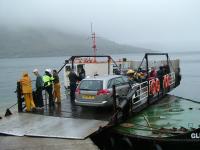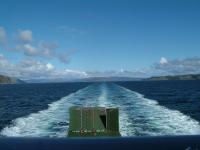Kiki
Well-known member
True-- simple physics-- the center of gravity drops a few inches on the side stand, and goes up a couple inches on the centerstand. Plus, if you measure the width of the centerstand pads, compare that to the distance between the sidestand landing and the wheel centerline -- a few inches more on the sidestand.The result: when we arrived in Port Hardy, Bernard's BMW was lying on it's side, parts of it resting against my bike -- luckily, no damage to my bike (and my bike, on the sidestand, etc. weathered the trip just fine). Bernard's bike:, I don't know (and, really, don't care). :huh: :angry:
Those 2 factors combined should, in theory, make a better triangle, and the sidestand a better choice. Not to say that I havent wondered about the stress on the sidestand. And finally, if the bike is in gear, it should be more resistant to front/back motion on the sidestand because the back wheel is on the ground. On the centerstand, there is no rear wheel resistance to front/back motion, because it is off the ground.
Either way, I have been in some rough water, on the sidestand with buckledowns (transport canada coastal regs) on both bars and the tail, No probs. And we are prohibitted from remaining on the vehicle deck during sailing.
6' swells are the norm around here, along with what we refer to as ground water swells, which are erratic waves caused by the currents and waves being affected by the topography of the ocean floor. I have persoanlly never seen a bike go down on our ferry system -- not saying it doesnt happen, but I sail that ferry three times a week in the summer, 1.5 hours each way.

























































